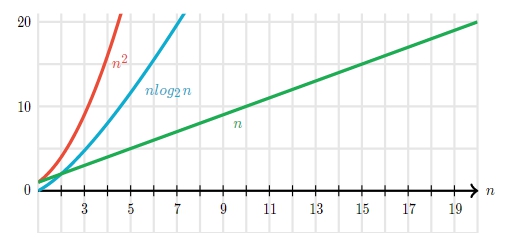Insertion Sort
想像手上有一副撲克牌,若想要將紙牌從左到右按照「小到大」排序。 Insertion Sort 的方法為:將第i張紙牌加入(insert)「前i−1張排序過」的紙牌組合,得到i張排序過的紙牌組合。 給一張圖就很好理解: 


Algorithm 主要由 2 個副程式組成:
Insert
- 將某一筆記錄 x 插入到 S[1] ~ S[i-1] 等 i - 1 筆已排序好的串列中,使之成為 i 筆已排序好的串列
- 即: 決定 x 插入的位置
Sort
- 將未排序好的記錄透過
Insert的動作,使之成為排序好的記錄 - 共需做 n - 1 回合,且由第二筆資料開始做起,∴ 迴圈: for i = 2 to n
程式碼
selection_sortview rawdef insertion_sort(collection: list) -> list: # 依序從collection[1:]開始往前插入 for insert_index, insert_value in enumerate(collection[1:]): temp_index = insert_index # 檢查到index=0停止 and 一個一個往前比 while insert_index >= 0 and insert_value < collection[insert_index]: # 往後移一個index collection[insert_index + 1] = collection[insert_index] # 繼續往前 insert_index -= 1 # 有改變index if insert_index != temp_index: # 前面while最後一行insert_index -= 1 collection[insert_index + 1] = insert_value return collection if __name__ == "__main__": from doctest import testmod testmod() user_input = input("Enter numbers separated by a comma:\n").strip() unsorted = [int(item) for item in user_input.split(",")] print(f"{insertion_sort(unsorted) = }")
特性
- 資料量少時較高效,且比其他
的排序法高效(selection sort/bubble sort)。 - 自適應排序:可根據當前資料排序情形加速排序,資料越接近排序完成,效率越高。
- 穩定排序:相同鍵值的元素,排序後相對位置不改變。
- 原地排序:不需額外花費儲存空間來排序。
- 即時演算法:可處理逐步輸入的資料,不需等資料完全備妥。
變形
時間複雜度
best case
若要處理的 array 剛好是 ascending,那只要比較 n-1 次,所以
average case
T(n) = T(n - 1) + n/2

worst case
若要處理的 array 剛好是 descending,那麼第 i 個元素則需要向前比較 i-1 次,所以 n+(n-1)+...+1 =
"Almost sorted" case
幾乎每次進到 insert 動作時( while 迴圈 )條件檢查就被擋下來,所以是 constant time,最外圈 loop( for迴圈 )執行 N-1 次。 所以是
空間複雜度
O(1)